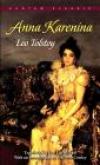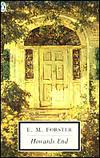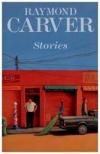Author Photo And Bio
 1. Don Quixote by Miguel de Cervantes (1605, 1615). Considered literature’s first great novel, Don Quixote is the comic tale of a dream-driven nobleman whose devotion to medieval romances inspires him to go in quest of chivalric glory and the love of a lady who doesn’t know him. Famed for its hilarious antics with windmills and nags, Don Quixote offers timeless meditations on heroism, imagination, and the art of writing itself. Still, the heart of the book is the relationship between the deluded knight and his proverb-spewing squire, Sancho Panza. If their misadventures illuminate human folly, it is a folly redeemed by simple love, which makes Sancho stick by his mad master “no matter how many foolish things he does.”
1. Don Quixote by Miguel de Cervantes (1605, 1615). Considered literature’s first great novel, Don Quixote is the comic tale of a dream-driven nobleman whose devotion to medieval romances inspires him to go in quest of chivalric glory and the love of a lady who doesn’t know him. Famed for its hilarious antics with windmills and nags, Don Quixote offers timeless meditations on heroism, imagination, and the art of writing itself. Still, the heart of the book is the relationship between the deluded knight and his proverb-spewing squire, Sancho Panza. If their misadventures illuminate human folly, it is a folly redeemed by simple love, which makes Sancho stick by his mad master “no matter how many foolish things he does.”
 2. Anna Karenina by Leo Tolstoy (1877). Anna’s adulterous love affair with Count Vronsky —which follows an inevitable, devastating road from their dizzyingly erotic first encounter at a ball to Anna’s exile from society and her famous, fearful end —is a masterwork of tragic love. What makes the novel so deeply satisfying, though, is how Tolstoy balances the story of Anna’s passion with a second semiautobiographical story of Levin’s spirituality and domesticity. Levin commits his life to simple human values: his marriage to Kitty, his faith in God, and his farming. Tolstoy enchants us with Anna’s sin, then proceeds to educate us with Levin’s virtue.
2. Anna Karenina by Leo Tolstoy (1877). Anna’s adulterous love affair with Count Vronsky —which follows an inevitable, devastating road from their dizzyingly erotic first encounter at a ball to Anna’s exile from society and her famous, fearful end —is a masterwork of tragic love. What makes the novel so deeply satisfying, though, is how Tolstoy balances the story of Anna’s passion with a second semiautobiographical story of Levin’s spirituality and domesticity. Levin commits his life to simple human values: his marriage to Kitty, his faith in God, and his farming. Tolstoy enchants us with Anna’s sin, then proceeds to educate us with Levin’s virtue.
 3. Père Goriot by Honoré de Balzac (1834). When law student Eugène de Rastignac falls for the high-maintenance daughter of Père Goriot, a wheat merchant King Lear who has impoverished himself elevating his daughters in Parisian society, he needs more money than he can make honestly. That’s when Vautrin, a fellow boarder at his pension, suggests that Rastignac might make his fortune . . . at the cost of a minor murder. The tension becomes almost unbearable as Rastignac wrestles with his conscience and readers confront Vautrin, whose contempt for conventional morality prefigures every existential hero since.
3. Père Goriot by Honoré de Balzac (1834). When law student Eugène de Rastignac falls for the high-maintenance daughter of Père Goriot, a wheat merchant King Lear who has impoverished himself elevating his daughters in Parisian society, he needs more money than he can make honestly. That’s when Vautrin, a fellow boarder at his pension, suggests that Rastignac might make his fortune . . . at the cost of a minor murder. The tension becomes almost unbearable as Rastignac wrestles with his conscience and readers confront Vautrin, whose contempt for conventional morality prefigures every existential hero since.
 4. Howards End by E. M. Forster (1921). This novel begins with literature’s most famous epigraph: “Only connect.” That search for human understanding —and the implied rarity of such knowledge —informs this saga of Margaret and Helen Schlegel, two bohemian sisters who become mixed up with the pragmatic, wealthy Wilcox family. In the confines of that family’s estate, Howards End, Forster sets a sprawling fable of class, money, love, psychology, and a changing England.
4. Howards End by E. M. Forster (1921). This novel begins with literature’s most famous epigraph: “Only connect.” That search for human understanding —and the implied rarity of such knowledge —informs this saga of Margaret and Helen Schlegel, two bohemian sisters who become mixed up with the pragmatic, wealthy Wilcox family. In the confines of that family’s estate, Howards End, Forster sets a sprawling fable of class, money, love, psychology, and a changing England.
 5. The Good Soldier by Ford Madox Ford (1915). A novel made seminally modernist through an unreliable narration that is part cubist, part Freudian, it tells the story of the prissy and rather thick John Dowell and his wife Florence who repeatedly meet British soldier Edward Ashburnham and his wife over the years at various upper-crust European spas. Dowell’s blindness to Edward and Florence’s hidden-in-plain-sight affair finally lifts, but his class solidarity with the man he calls a “good soldier” endures —a tension that creates an exquisite portrait of denial and the death throes of Edwardian gentility.
5. The Good Soldier by Ford Madox Ford (1915). A novel made seminally modernist through an unreliable narration that is part cubist, part Freudian, it tells the story of the prissy and rather thick John Dowell and his wife Florence who repeatedly meet British soldier Edward Ashburnham and his wife over the years at various upper-crust European spas. Dowell’s blindness to Edward and Florence’s hidden-in-plain-sight affair finally lifts, but his class solidarity with the man he calls a “good soldier” endures —a tension that creates an exquisite portrait of denial and the death throes of Edwardian gentility.
 6. My Ántonia by Willa Cather (1918). Featuring a beleaguered central heroine who endures her father’s suicide, is driven to work in the fields, and is seduced, abandoned, and left pregnant, this ought to be a tale of tragic inevitability. Instead, this beautifully elegiac novel offers an unsentimental paean to the prairie, to domesticity, and to memory itself. As remembered by her friend Jim, Ántonia is as mythic and down-to-earth as the Nebraska she inhabits.
6. My Ántonia by Willa Cather (1918). Featuring a beleaguered central heroine who endures her father’s suicide, is driven to work in the fields, and is seduced, abandoned, and left pregnant, this ought to be a tale of tragic inevitability. Instead, this beautifully elegiac novel offers an unsentimental paean to the prairie, to domesticity, and to memory itself. As remembered by her friend Jim, Ántonia is as mythic and down-to-earth as the Nebraska she inhabits.
 7. Sister Carrie by Theodore Dreiser (1900). Ambitious farm girl Carrie Meeber comes to Chicago, gaining the favor of a wealthy bar manager named Hurstwood to avoid the sweatshops. The smitten man ditches his family, absconds with company funds, and moves to New York with Carrie. When he can’t find work his star falls as Carrie’s rises in the theater. Filled with the tensions between rural America and its bustling urban future, and between propriety and ambition, Sister Carrie is a haunting portrait of a nation’s contradictory impulses.
7. Sister Carrie by Theodore Dreiser (1900). Ambitious farm girl Carrie Meeber comes to Chicago, gaining the favor of a wealthy bar manager named Hurstwood to avoid the sweatshops. The smitten man ditches his family, absconds with company funds, and moves to New York with Carrie. When he can’t find work his star falls as Carrie’s rises in the theater. Filled with the tensions between rural America and its bustling urban future, and between propriety and ambition, Sister Carrie is a haunting portrait of a nation’s contradictory impulses.
 8. The Great Gatsby by F. Scott Fitzgerald (1925). Perhaps the most searching fable of the American Dream ever written, this glittering novel of the Jazz Age paints an unforgettable portrait of its day — the flappers, the bootleg gin, the careless, giddy wealth. Self-made millionaire Jay Gatsby, determined to win back the heart of the girl he loved and lost, emerges as an emblem for romantic yearning, and the novel’s narrator, Nick Carroway, brilliantly illuminates the post–World War I end to American innocence.
8. The Great Gatsby by F. Scott Fitzgerald (1925). Perhaps the most searching fable of the American Dream ever written, this glittering novel of the Jazz Age paints an unforgettable portrait of its day — the flappers, the bootleg gin, the careless, giddy wealth. Self-made millionaire Jay Gatsby, determined to win back the heart of the girl he loved and lost, emerges as an emblem for romantic yearning, and the novel’s narrator, Nick Carroway, brilliantly illuminates the post–World War I end to American innocence.
 9. Rabbit Angstrom — Rabbit, Run (1960), Rabbit Redux (1971), Rabbit Is Rich (1981), Rabbit at Rest (1990) — by John Updike. Read as four discrete stories or as a seamless quartet, the Rabbit novels are a tour de force chronicle, critique, and eloquent appreciation of the American white Protestant middle-class male and the swiftly shifting culture around him in the last four decades of the twentieth century. From his feckless youth as a promising high school athlete and unready husband and father in Rabbit, Run; through vulgar affluence, serial infidelity, and guilt as a car dealer in Rabbit Redux; to angry bewilderment over 1970s social upheaval in Rabbit Is Rich, the meaningfully named Rabbit Angstrom gamely tries to keep up with it all, to be a good guy. But the world is too much with, and for, Rabbit, who staggers through literal and metaphorical heart failure before finally falling in Rabbit at Rest.
9. Rabbit Angstrom — Rabbit, Run (1960), Rabbit Redux (1971), Rabbit Is Rich (1981), Rabbit at Rest (1990) — by John Updike. Read as four discrete stories or as a seamless quartet, the Rabbit novels are a tour de force chronicle, critique, and eloquent appreciation of the American white Protestant middle-class male and the swiftly shifting culture around him in the last four decades of the twentieth century. From his feckless youth as a promising high school athlete and unready husband and father in Rabbit, Run; through vulgar affluence, serial infidelity, and guilt as a car dealer in Rabbit Redux; to angry bewilderment over 1970s social upheaval in Rabbit Is Rich, the meaningfully named Rabbit Angstrom gamely tries to keep up with it all, to be a good guy. But the world is too much with, and for, Rabbit, who staggers through literal and metaphorical heart failure before finally falling in Rabbit at Rest.
 10. Stories of Raymond Carver (1938–88). Culled from his own hard-drinking, working-class upbringing in the Pacific Northwest, Carver’s stories depict relationships in various states of decay, the unsung losses of unsung people, and the prolonged misery of ordinary people delivered in a sly understated tone sometimes called dirty realism. A master of the short story, Carver’s name was only beginning to be mentioned in the same breath as Hemingway and O’Connor when lung cancer brought him down at the age of fifty.
10. Stories of Raymond Carver (1938–88). Culled from his own hard-drinking, working-class upbringing in the Pacific Northwest, Carver’s stories depict relationships in various states of decay, the unsung losses of unsung people, and the prolonged misery of ordinary people delivered in a sly understated tone sometimes called dirty realism. A master of the short story, Carver’s name was only beginning to be mentioned in the same breath as Hemingway and O’Connor when lung cancer brought him down at the age of fifty.